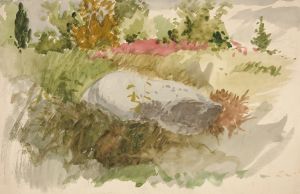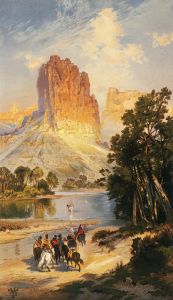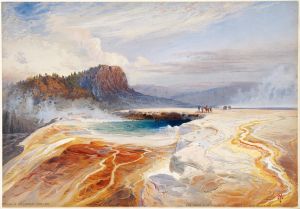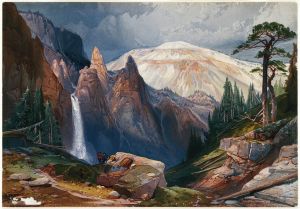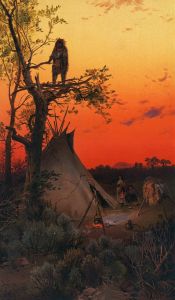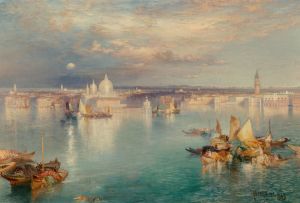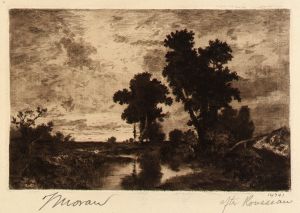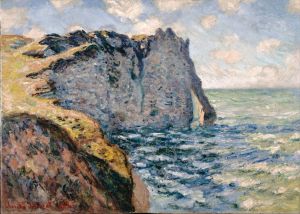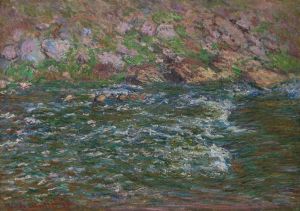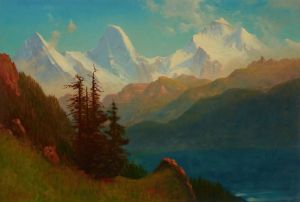
Near Meadow Creek, Utah
A hand-painted replica of Thomas Moran’s masterpiece Near Meadow Creek, Utah, meticulously crafted by professional artists to capture the true essence of the original. Each piece is created with museum-quality canvas and rare mineral pigments, carefully painted by experienced artists with delicate brushstrokes and rich, layered colors to perfectly recreate the texture of the original artwork. Unlike machine-printed reproductions, this hand-painted version brings the painting to life, infused with the artist’s emotions and skill in every stroke. Whether for personal collection or home decoration, it instantly elevates the artistic atmosphere of any space.
Thomas Moran was a prominent American painter and printmaker of the 19th century, renowned for his depictions of the American West. Born in 1837 in Bolton, England, Moran immigrated to the United States with his family in 1844. He became a central figure in the Hudson River School of art, a movement known for its romantic portrayal of the American landscape. Moran's work played a significant role in shaping the perception of the American wilderness and contributed to the establishment of national parks.
"Near Meadow Creek, Utah" is one of Moran's many works that capture the vast and dramatic landscapes of the American West. Although specific details about this particular painting are limited, it is consistent with Moran's broader oeuvre, which often features sweeping vistas, dramatic skies, and meticulous attention to natural detail. Moran's paintings are characterized by their vibrant color palettes and the ability to convey the grandeur and majesty of the natural world.
Moran's journey to the American West was significantly influenced by his participation in the Hayden Geological Survey of 1871, which explored the Yellowstone region. This expedition provided Moran with the opportunity to sketch and document the landscapes that would later become subjects of his most famous works. His paintings of Yellowstone were instrumental in convincing the U.S. Congress to establish Yellowstone as the first national park in 1872.
While "Near Meadow Creek, Utah" may not be as widely recognized as some of Moran's other works, it likely shares the same qualities that define his artistic legacy. Moran's ability to capture the interplay of light and shadow, along with his attention to the geological features of the landscape, would have been evident in this painting. His works often evoke a sense of awe and wonder, inviting viewers to appreciate the beauty and complexity of the natural world.
Moran's influence extended beyond his paintings. He was also an accomplished printmaker and illustrator, contributing to publications that helped disseminate images of the American West to a broader audience. His work played a crucial role in shaping the visual identity of the American frontier during a time of rapid expansion and exploration.
Throughout his career, Moran remained committed to exploring and depicting the American landscape. His paintings continue to be celebrated for their artistic merit and historical significance. They serve as a testament to the beauty of the American wilderness and the importance of preserving these natural treasures for future generations.
In summary, while specific information about "Near Meadow Creek, Utah" is limited, it can be appreciated within the broader context of Thomas Moran's work and his contributions to American art and conservation. His legacy as a painter of the American West endures, and his works remain a vital part of America's cultural and artistic heritage.





